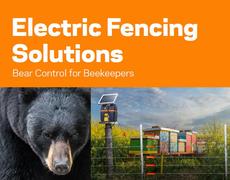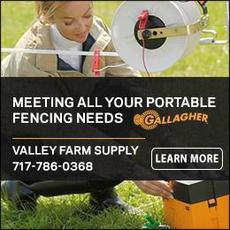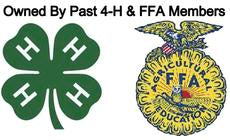In today’s cattle market, more and more producers are recognizing the importance of following the guidelines set forth by the national Beef Quality Assurance (BQA) program.
The BQA embraces a total quality management concept, which not only focuses on food safety and meat quality but also on proper animal handling and the public perception of the beef industry.
Cattlemen looking to improve the quality of their beef through the better management practices of the BQA often need to improve the quality of their cattle-handling equipment.
While these improvements can represent a significant investment, the long-term herd quality improvement makes it a smart investment.
It is important to have the BQA guidelines in mind when selecting new equipment, especially when selecting a squeeze chute.
To choose a squeeze chute that complements the BQA’s safe-handling guidelines, producers need to look for a chute that will reduce handling stress on cattle, that will make management practices easy to perform and that will be safe for the animal and operator.
Stress and simplicity
The BQA’s stockmanship and stewardship program focuses on increasing cattle performance by reducing handling stress.
While many factors affect animal stress, several of these “stressors” can easily be reduced by simply selecting the right squeeze chute. Producers should look for a chute that operates quietly to minimize loud banging noises that often spook cattle.
The BQA’s best management practices guide recommends selecting a chute with curved or contoured sides to better fit the shape of cattle.
This guide also recommends covering the back three-quarters of the chute to reduce distractions that could cause cattle to balk.
It is important that the method used to cover the chute does not inhibit the chute’s functionality; snap-on “blinders” are a great option.
Finally, look for an easy-to-operate chute that will minimize the amount of time an animal has to stay in the “squeeze.”
By reducing the time that it takes to work each animal, producers can reduce the amount of stress on each animal, with the added benefit of spending less time “working” cattle.
Help with identification
Another major focus of the BQA is encouraging cattlemen to perform a number of important management practices to improve record-keeping and herd health.
Having the right squeeze chute can make performing these tasks quicker and easier. For producers that use branding as a means of identification, having a chute with a secure squeeze and adequate flank access is important.
For producers that use ear tags or tattoos, it is important that the chute provide a safe way to restrain the animal’s head.

Injection access
Since the BQA states that all injections must be administered in front of the shoulders, cattlemen should also look for a chute that provides adequate access to an animal’s neck.
This can be accomplished by an access port built into the frame of the chute or through the addition of neck extenders. For sick animals, it is important that the chute allow secure access to the affected part of the animal.
This could include drop-down panels to allow access to an animal’s back, side, hooves or udder. Access through the tailgate to the rear of the animal may also be required for procedures that require palpation.
Safety and size
Safety is a topic included in every aspect of the BQA program, so it is important to select a squeeze chute that is safe for the cattle being run through it.
The BQA recommends minimizing slippery surfaces that could cause cattle to fall, so producers should look for a chute with a floor that is grooved or ridged to provide cattle with good traction.
It is also important that the size of the chute fit the size of the cattle. For producers with mixed cattle sizes, like cow-calf herds, look for a chute that can be easily and quickly adjusted to change the width of the chute, the fit of the squeeze or headgate, and the width of the chute entry point.
Cow-calf producers should be especially mindful of the chute entry point or tailgate function, as some squeeze chutes leave a wide opening for calves to “escape” through when the chute is adjusted down to its narrowest width.
An additional safety feature to look for is an emergency exit that will allow a downed or distressed animal to safely exit the chute if the need arises.
Safety for the operator is also key, so it is imperative cattlemen are familiar with the proper use of their cattle-handling equipment. Producers should look for an easy-to-operate chute.
For example, make sure the mechanisms on the chute can be comfortably reached and operated without having to use excessive force.
Be aware of the placement of levers and handles on the chute to ensure they won’t get in the way of the operator while the chute is in use and that there are no sharp edges or dangerous pinch points.
The BQA also recommends regular equipment cleaning and maintenance, so look at the durability and maintenance requirements of a chute before purchasing.
The BQA’s total quality management approach has been instrumental in helping cattle producers adopt better management practices for their herds.
It has also helped producers realize the importance of having the right cattle-handling equipment to make following the BQA guidelines easier.
By selecting a squeeze chute that reduces handling stress on cattle, producers see increased meat quality and efficiency.
Having the right chute also makes it easier to perform important management practices, leading to better record-keeping and healthier herds. Finally, selecting a chute with safety in mind leads to fewer injuries to animals and producers.
Cattlemen who are familiar with the guidelines of the BQA can apply them to selecting not just their squeeze chute, but their complete handling system.
There are numerous publications and videos available from theBQA that can help you improve your cattle-handling techniques and the overall quality of your beef. 
PHOTOS
TOP: A chute should provide secure access to the affected part of a sick or injured animal.
MIDDLE: Since BQA states all injections must be given in front of the shoulders, a chute should provide access to the neck.Photos courtesy of Priefert.

Courtney M. Dyer
Director of Public Relations
Priefert Ranch Equipment
Written by Courtney M. Dyer Published on 24 Apr 2014








 Energizer Installation
Energizer Installation Ground Return System
Ground Return System








